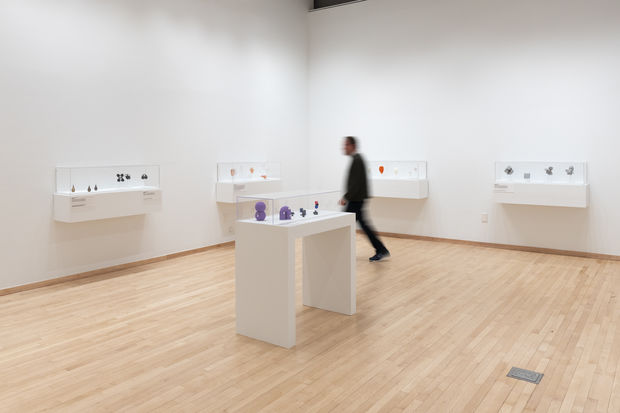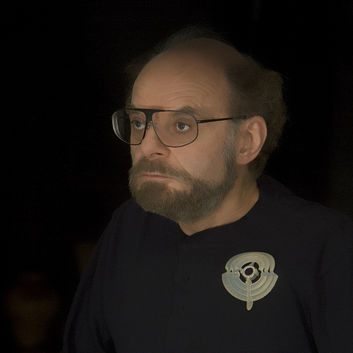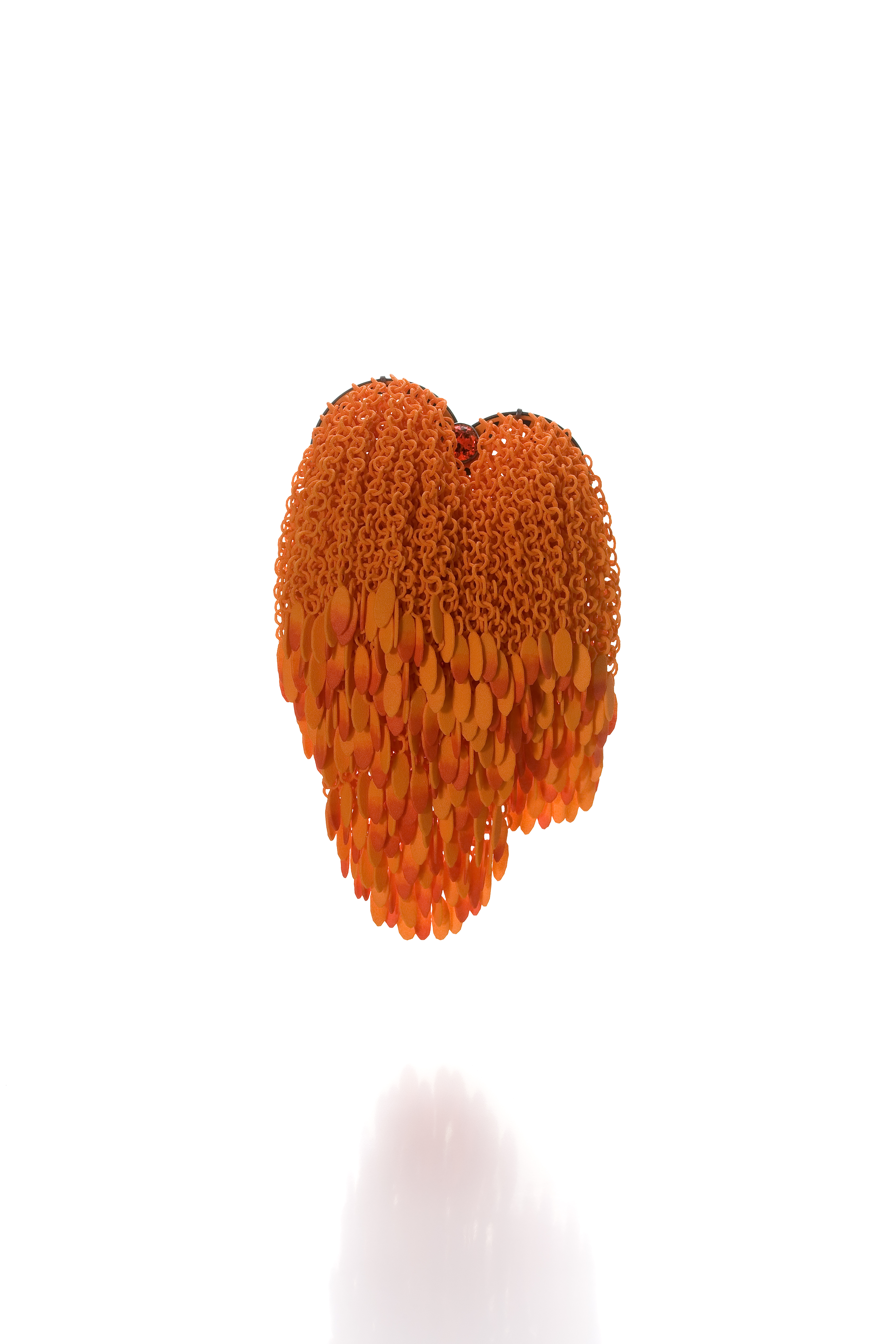The Origins of Tyler Metals/Jewelry/CAD-CAM

Decorative Digitalism, a merger of digital technology and delicate hand craftsmanship in jewelry, is the brainchild of Assistant Professor Doug Bucci, but in many ways its origins can be traced back 62 years to the founding of Tyler’s Metals/Jewelry/CAD-CAM program by pioneering artist and educator Stanley Lechtzin.
“Stanley was looking for new possibilities in the field, and saw in the factory and industry environments tools and practices that could revolutionize the art of jewelry making and metalsmithing,” said Bucci, who co-curated the show with Saul Bell Design Award-winning artist Sungyeoul Lee.
The works in the exhibition, a collaboration between Tyler and the Kookmin University in Seoul, South Korea, have been formed by blending various digital-based production processes with traditional hand crafting: 3D printing, 3D scanning, photochemical machining for precise component production, five-axis computer numerically controlled (CNC) milling and laser engraving for intricate designs. The works are on view in the Edgar Heap of Birds Family Gallery.
Many of these techniques and processes, such as electroforming and other industrial practices, were first introduced into the field by Lechtzin, who joined the Tyler faculty after studying metalsmithing and jewelry at Wayne State University and then at Cranbrook Academy of Art.

Stanley Lechtzin
“I had to good fortune of being at the Cranbrook at a time when it was undergoing major changes, and it attracted the best faculty and most ambitious students. It was a very, very unique time,” Lechtzin said recently. The persistent question that drove his teaching, research and practice for six decades was “what does this teach us.”
Lechtzin’s practice, research, and teaching “were integral to innovation within the jewelry industry,” said Bucci, adding that Lechtzin’s research brought experiments with computer technology to the program in 1984 with a Temple University grant to purchase the newly released home computer Apple IIE.
The first class based on computer-aided design (CAD) software was led by Lechtzin and colleague Daniella Kerner, who taught in the MJCC program for 41 years and helped pioneer the use of many new methods. The later development of computer-aided manufacturing (CAM) allowed designs created in CAD to be realized.
“There was a lot of trial and error,” said Kerner, noting that she and Lechtzin learned what was possible with new technologies and materials such as plastics through research and the advent of the world wide web as they went along teaching students. They both retired in 2018, and Kerner now serves as executive director at the Long Beach Island Foundation of the Arts and Sciences, which Tyler’s first dean, Boris Blai, helped to establish.
Today, the MJCC program offers three distinct tracks: studio art, production and product design, and industry. Each track emphasizes a balance of theory and practice, integrating digital and analog approaches, which helps students develop a comprehensive skill set.
In the studio art track, students explore the expressive potential of metalwork and jewelry through theoretical concepts and hands-on craftsmanship, utilizing both traditional techniques and digital tools to bring their artistic visions to life.
The track in production and product design also combines theoretical design principles with practical application. Students learn to conceptualize and create jewelry and metal objects, utilizing analog methods such as sketching and prototyping and digital tools like CAD-CAM. They analyze design theories and integrate them into their production processes to create innovative and functional pieces.
The industry track integrates theory and practices to prepare students for professional careers in the jewelry and metalworking sectors. Students gain theoretical knowledge in manufacturing processes, industry standards, and market analysis while developing practical skills using digital technologies for efficient production and quality control. They understand the significance of combining theoretical insights with practical expertise to meet industry demands.

Ryungjae Jung 정령재, "The Motion 모션" (2020). Image courtesy of the artist.
“We’ve had a large number of people who have come to the U.S. to study in the program,” particularly from South Korea, said Bucci. Notably, renowned Korean master artists Lizzy Yoo completed the MJCC’s MFA program in 1976. Bucci credits Yoo’s widespread fame in Korea for the wave of students who have come to study in the program. Other acclaimed MJCC alumni include Albert Paley (’66, ’69), Eleanor Moty (’71), Gary Griffin (’74), Matthew Hollern (’89) and Emily Cobb (’12).
“We have connections with a large number of communities because of the innovative work in our program, and the trajectory of students is exciting because we can offer access to new paths” in artistic practice and professional careers, he said.
Decorative Digitalism, on view at Temple Contemporary, Tyler’s center for exhibition and public programming, has been extended to February 10.